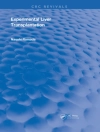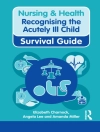The phylontogenic theory proposes an original understanding of nose, sinus and midface formation and development by looking back in evolution for the first traces of the olfactory organ and then tracing its successive phyletic transformations to become part of the respiratory apparatus and finally the central point of human facial anatomy. Von Baer’s, Darwin’s, Haeckel’s, Garstang’s, Gould’s and Buss’ explorations of parallels between phylogeny and ontogeny help to trace the nose and midface story. The paradigm of existing parallels between ontogeny and phylogeny proves useful both in seeking to understand the holoprosencephalic spectrum of facial malformations (which represent radically different pathways of facial development after the life’s tape has been started to run again) and in formulating hypotheses on chordate to vertebrate evolution. The phylontogenic theory leads to new medical hypotheses on nose and sinus diseases and opens the field of evolution and development-based medicine.
Table of Content
Introduction.- The primary nose and palate in evolution.- The primary nose and palate in human embryo development parallels between evolution and development of the nose.- The seemingly simple formation of the secondary palate and nose in the human embryo.- The complex formation of the secondary palate and nose in evolution.- Primary and secondary palates – primary and secondary nasal fossae.- Olfactory and respiratory nasal fossae.- Is the human ethmoid labyrinth a sinus?.- Understanding the anatomy of the human nose.- The nose in midface development.- Medical hypotheses and perspectives – evolutionnary & developmental (evo-devo) medicine.- Conclusion.
About the author
Prof Jankowski is a member of the Executive Committee of the European Rhinologic Society; of the Preliminary International Faculty Board of the European Academy of Facial Plastic Surgery; and of the Scientific Committee of the French Society of Otorhinolaryngology. He also served as president of the French Society of Otorhinolaryngology’s working group for the Guidelines on Chronic Cough in Adults (2006).












